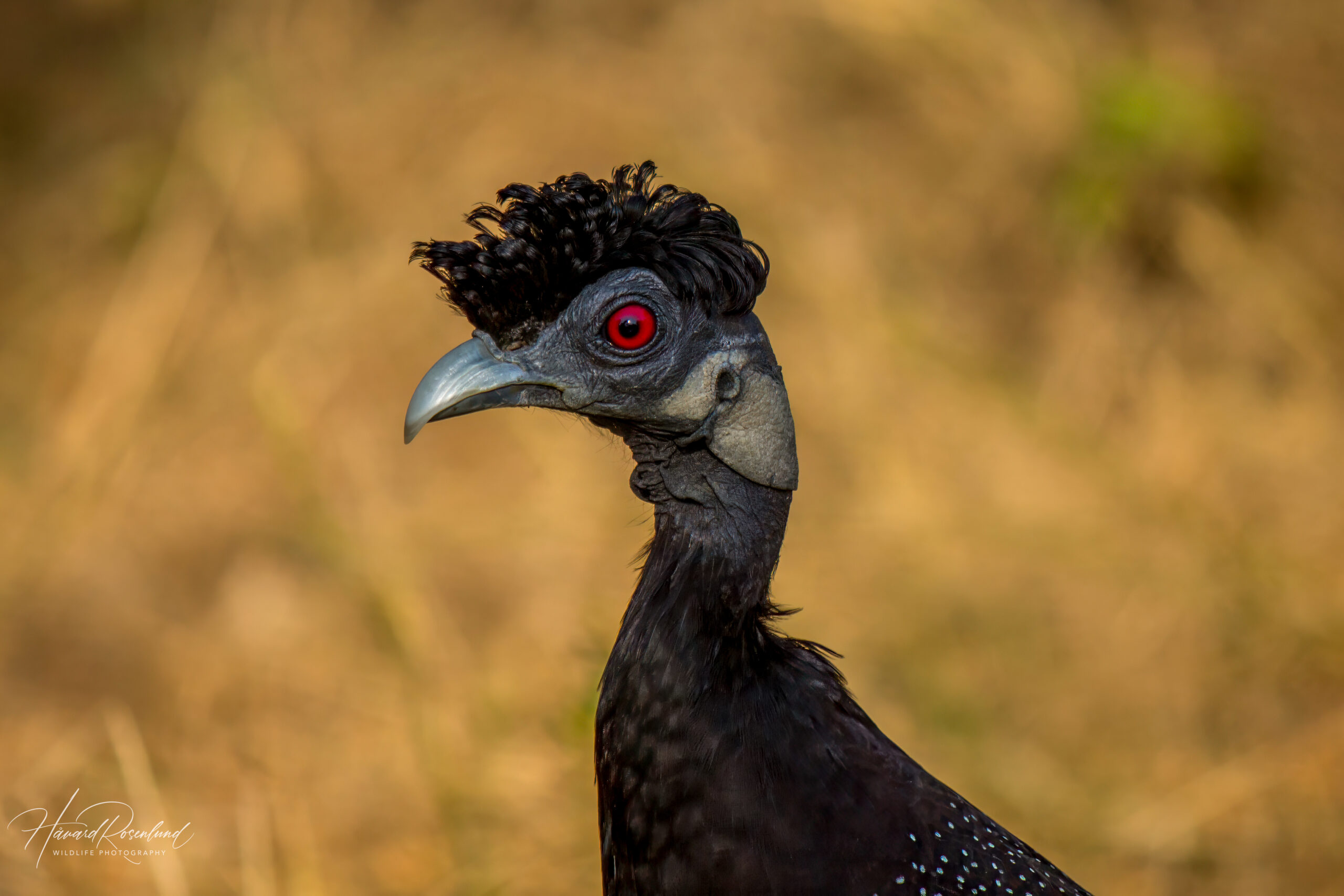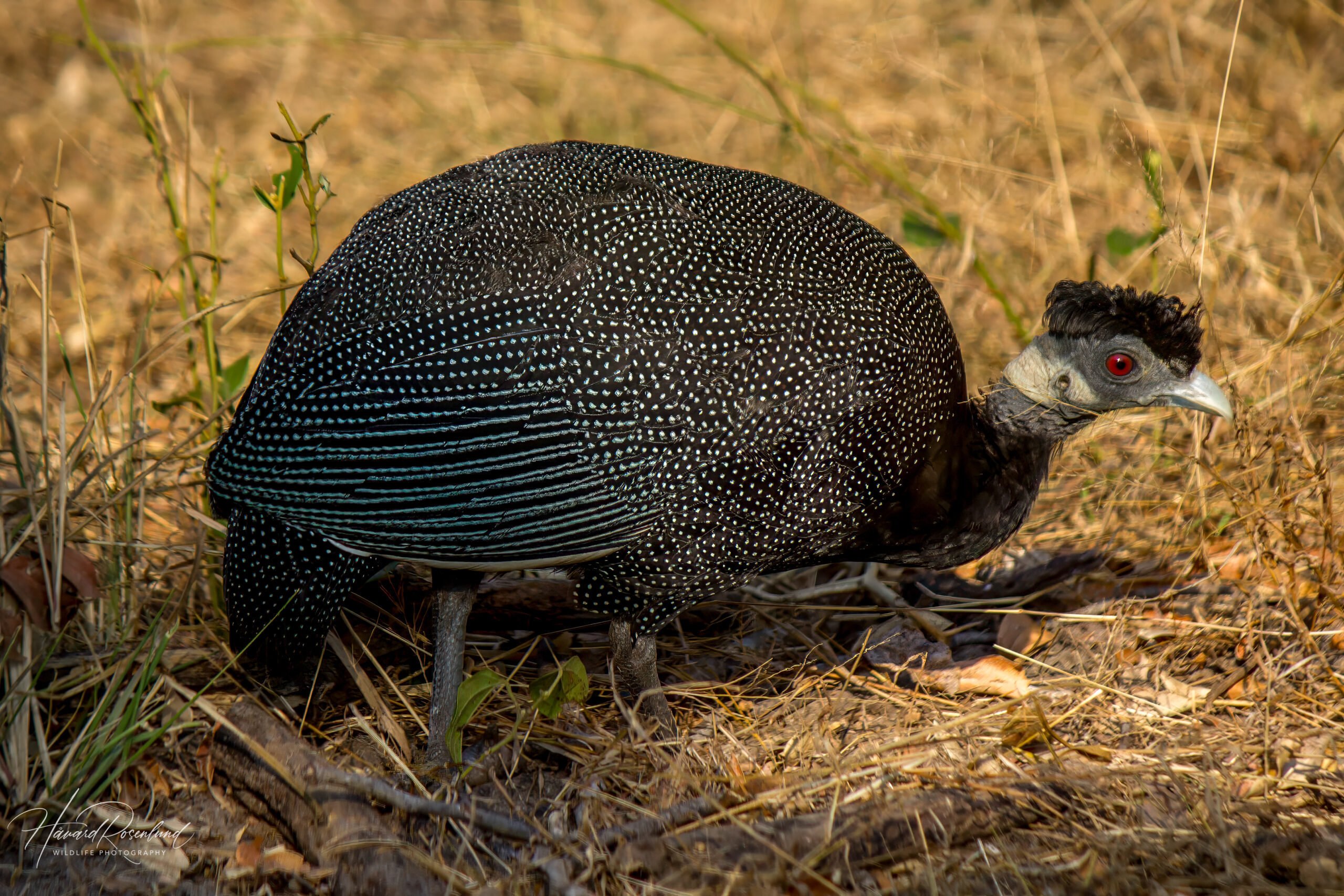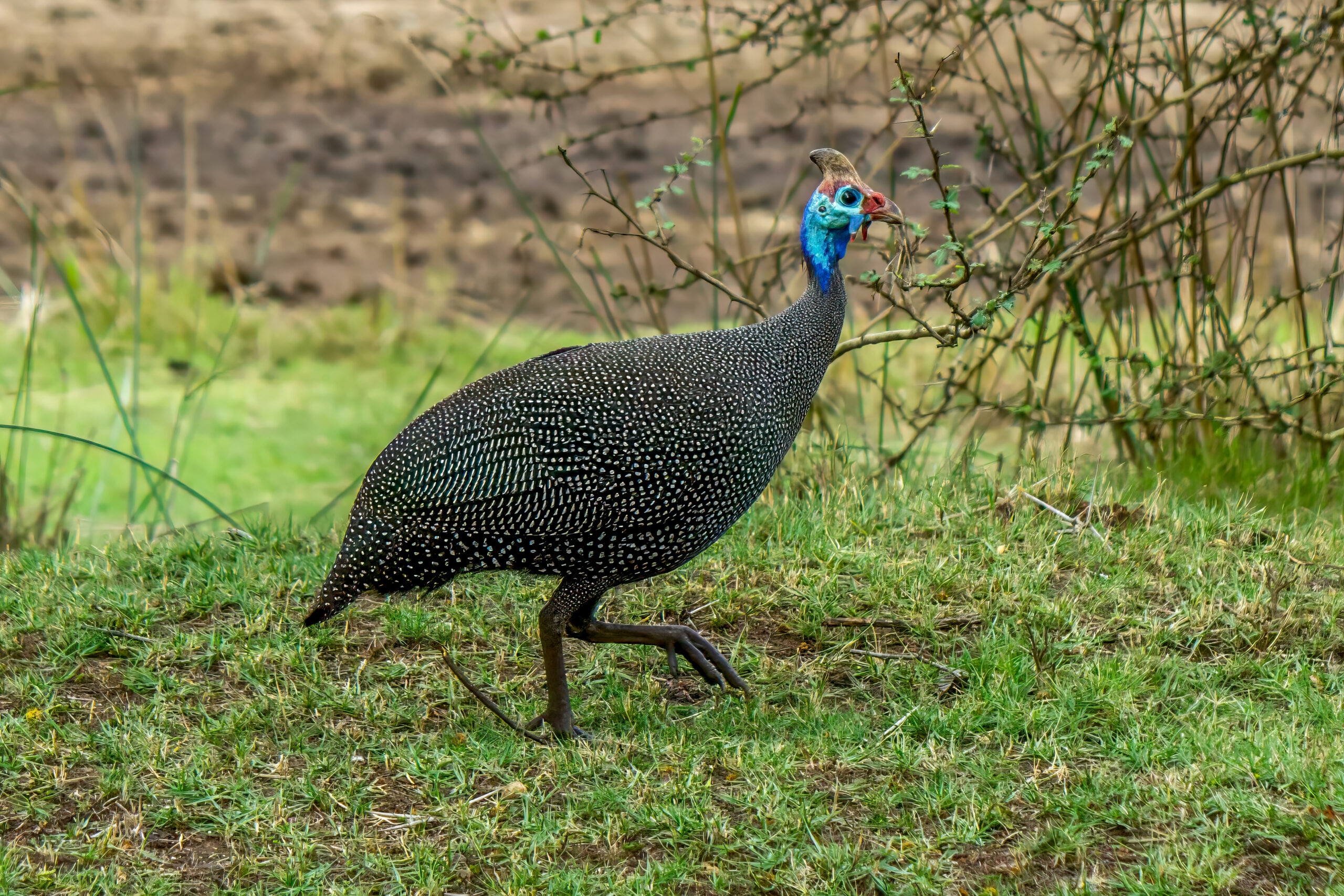Description
It was, until recently, only one recognized species of crested guineafowl (previously Guttera pucherani), but recent studies have concluded in a separation into three distinct species, eastern crested guineafowl (Guttera pucherani), western crested guineafowl (G. verreauxi), and the southern crested guineafowl (G. edouardi). Main differences are morphological, such as face coloration and crest differences. Different calls are also distinguishable factors. Here I focus on the southern crested guineafowl.
The southern crested guineafowl reach an average length of 50 cm (20 in) and a weight between 0.7–1.5 kg (1.6–3.4 lb). It has a blackish coat with a dense pattern of white spots. Like the other crested guineafowls, it has a “naked” face and neck with a black, curly crest on top of its head. It is distinguished from the other species by having grey facial skin and a big white patch at the back of the head covering the ear.
Diet & habitat
The southern crested guineafowl prefers vegetated areas such as open forests, savannah woodland, and coastal forests. It is an omnivorous bird with a varied diet. It will feed on seeds, fruits. berries, leaves, shoots, bulbs, and roots of plants as well as various insects and spiders. It is also known to commonly feed on large herbivore dung from elephant, rhinoceros, and hippopotamus.
Nesting
Southern crested guineafowl is a monogamous species and will stick with one mate throughout its life. They are often found in large groups and family units although they nest in pairs. Breeding season commonly starts after the first onset of heavy rain in and around October and lasts up until February. A nest is made on the ground often hidden under a bush or in thick vegetation. 2-12 eggs (4-7 are most common) are laid and incubated for around 23 days before hatching. Chicks develop into juveniles after about a month.
Status
The southern crested guineafowl is very common within its range and is found in many protected areas as well as surviving near human habitation. It is listed as least concern on the IUCN Red List.








